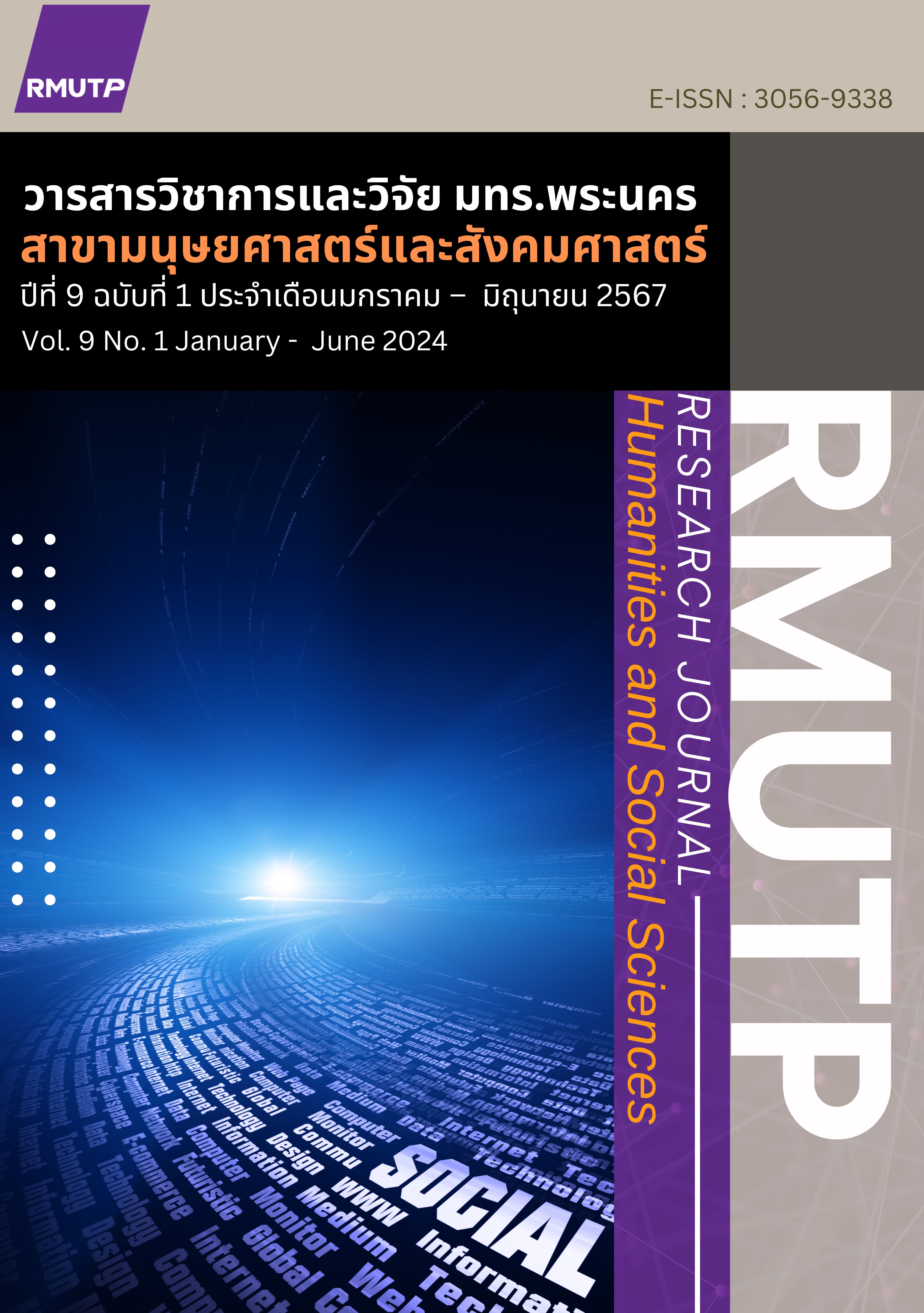Virtual Reality for Tourism Promoting of Koh Pha-ngan
Main Article Content
Abstract
This research aimed to achieve the following objectives to develop virtual media to promote tourism in Koh Phangan, and study satisfaction in using virtual media to promote tourism in Koh Phangan using quantitative research methods. This involves sorting and collecting data from various sources, including documents and studying the results of Koh Phangan tourism promotion using virtual reality media. Data collection will involve using tools such as structured questionnaires. The sample group will consisted of male and female tourists residing in Bangkok, ages 15 to 45 who have visited Koh Phangan and those who haven't. A total of 400 people will be randomly selected for this purpose (using purposive sampling). The research results revealed that the development of virtual reality technology will promote tourism on Koh Phangan by providing tours around the island and producing films to show at major Koh Phangan tourist destinations suggests using the camera to move and submerge it in order to take pictures. through the collection of unique virtual reality images. Overall, there was a high degree of satisfaction with the use of virtual media to encourage travel to Koh Phangan including content (= 4.73), usability (
= 4.61), design (
= 4.68), overall system components (
= 4.83), and benefits (
= 4.80). They also feel that the media was engaging, and easy to view on a smartphone, and they were interested in seeing 360-degree virtual reality images in more locations. Furthermore, there was a desire to explore overseas places through this technology, especially for those unable to travel. Viewing these images created a sense of being present in those locations.
Article Details
References
กระทรวงการท่องเที่ยวและกีฬา. (2566). ยุทธศาสตร์กระทรวงการท่องเที่ยวและกีฬา ฉบับที่ 4 (พ.ศ. 2560-2564). กรุงเทพฯ: กระทรวงการท่องเที่ยวและกีฬา.
กระทรวงการท่องเที่ยวและกีฬา. (2566). แผนพัฒนาการท่องเที่ยวแห่งชาติ ฉบับที่ 3 (พ.ศ. 2566 – 2570). กรุงเทพฯ: กระทรวงการท่องเที่ยวและกีฬา.
การท่องเที่ยวแห่งประเทศไทย. (2564). ททท. เปิดเกม “ปีท่องเที่ยวไทย 2566” เร่งเครื่องยกระดับห่วงโซ่อุปทาน กระตุ้นตลาดคุณภาพสู่ความยั่งยืนด้วย “Meaningful Travel” มั่นใจฟื้นรายได้สูงสุด 2.38 ล้านล้านบาท. สืบค้นจาก https://thai.tourismthailand.org/Articles/ปีท่องเที่ยวไทย-2566
คณะกรรมการนโยบายการท่องเที่ยวแห่งชาติ. (2566). แผนพัฒนาการท่องเที่ยวแห่งชาติ ฉบับที่ 3 (พ.ศ. 2566 – 2570). กรุงเทพฯ: คณะกรรมการนโยบยการท่องเที่ยวแห่งชาติ.
บุญชม ศรีสะอาด. (2556). การวิจัยเบื้องต้น. พิมพ์ครั้งที่ 9. กรุงเทพฯ: สุวรีิยาสาส์น.
เพ็ญนภา เพ็งประไพ. (2559). ปัจจัยส่วนประสมทางการตลาดที่มีอิทธิพลต่อความต้องการของนักท่องเที่ยวชาวไทยและต่างชาติในกิจกรรมการท่องเที่ยวเชิงสังคมและวัฒนธรรมของเกาะพะงัน จังหวัดสุราษฎร์ธานี. การค้นคว้าอิสระศิลปศาสตรมหาบัณฑิต สาขาวิชาการจัดการอุตสาหกรรมการบริการและการท่องเที่ยว บัณฑิตวิทยาลัย มหาวิทยาลัยกรุงเทพ.
รัฐพล วงศาโรจน์. (2565). 8 เทคโนโลยีตอบโจทย์รูปแบบการท่องเที่ยวยุคใหม่. สืบค้นจาก https://www.nia.or.th/8-Travel-Technologies
Benno, M. (1998). Virtual Reality. Gifted Child Today, 21(1), pp.12-14. https://doi.org/10.1177/107621759802100104
Gutiérrez, M., Vexo, F., & Thalmann, D. (2008). Introduction. In: Stepping into Virtual Reality. Springer, London.
Locke, John. (1689). Second Treatises of Government. England: Awnsham Churchill.
Rubio-Tamayo, Jose Luis, Gértrudix, Manuel & García, Francisco. (2017). Realidad virtual como tecnología para la generación de modelos de representación del espacio. Interactividad communicación para la transformación del entorno. 2(2017).
Ruotolo, Francesco, Maffei, Luigi, Gabriele, Maria, Iachini, Tina, Masullo, Massimiliano & Ruggiero, Gennaro & Senese, and Vincenzo Paolo. (2013). Immersive Virtual Reality and Environmental Noise Assessment: an innovative audio-visual approach. Environmental Impact Assessment Review, p.41.
Serrano, B., Baños, R. M., & Botella, C. (2016). Virtual reality and stimulation of touch and smell for inducing relaxation: A randomized controlled trial. Computers in Human Behavior, 55 (Part A), pp.1–8.
Sherman, William & Craig, Alan. (2003). Understanding Virtual Reality-Interface, Application, and Design. Morgan Kaufmann Publishers Inc.
Stephen, M. Porter. (1996). Expanding the VR Aesthetic. Computer Graphics World, 19(7) July, p.4.
Sussmann, Silvia and Vanhegan, Hugo. (2000). Virtual Reality and the Tourism Product Substitution or Complement?. ECIS 2000 Proceedings, p.117.
Sutherland, Ivan. (1960). American electrical engineer and computer scientist. M.S. EE, California Institute of Technology.

